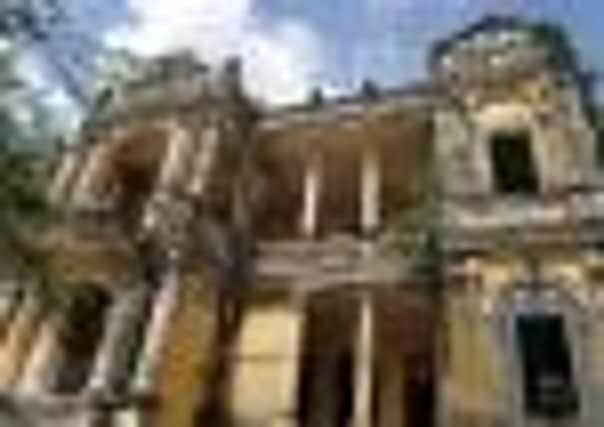City guide: Phnom Penh, Cambodia


With a population rendered young by the genocide inflicted by the Khmer Rouge, it’s a vibrant, fast-moving city where the air of change is palpable. For the fan of Art Deco and French colonial architecture, a treat is in store, while the traditional Khmer and post-Pol Pot eras are fascinating and have resulted in a style called New Khmer architecture. Visit now before it all changes.
BEST ARCHITECTURE TOURS
on the second and fourth weekend of each month, Khmer Architecture Tours (www.ka-tours.org) focus on the New Khmer style of the post-independence period after 1953, when Camobdia broke away from France. A dynamic period of change, it saw extensive building and a style of archtiecture that focused on fusing international trends with local tradition, materials and climate. From the 1960s Vann Molyvann National Sports Complex with its mushroom roof to the ‘100 houses’ reinterpretation of the traditional Khmer home for National Bank of Cambodia staff in 1965, the tours cover well known and less obvious buildings. Lasting around two and a half hours, they cost US$12.


BEST HOTEL
Advertisement
Hide AdDESIGNED by Ernest Hébrard, the French architect responsible for transforming Phnom Penh from a Cambodian-French colonial city into a bustling metropolis, the Raffles Hotel Le Royal was built in the early 1920s. Sitting on a wide, tree-lined avenue, the building is distinguished by its blend of Khmer, Art Deco and French colonial architecture.
During the fall of Phnom Penh to the Khmer Rouge in 1975, the upper floors were so exposed to rocket and artillery fire they were available for the bargain price of US$5 a night. Between 1975 and 1979, it was under Khmer Rouge control, then taken over by aid agencies during the 1980s and 1990s. Bought by Raffles International, it had three new wings added in 1996, while original fittings and furnishings were traced and reproduced. From Charlie Chaplin to Bill Clinton, Raffles has seen its share of VIPs, which is not surprising since it’s within easy access of attractions such as the Royal Palace, central markets, and National Museum of Cambodia. Rooms cost from US$207 (£132) per night (www.raffles.com/phnom-penh)
BEST RESTAURANT
SPLENDID tiles, stained glass and wooden panels mark out Van’s Restaurant (www.vans-restaurant.com), housed in a 150-year-old building this is a triumph of the French colonial style. Built to house the Indochina Bank, it was later owned by the Van family, who fled the Khmer Rouge in 1975. Procured back from the government in 2003, it has been restored to its former glory by Porleng Van and her sister Porlim, who manage the restaurant as a French fine dining eatery. Porleng researched the archives of the National Library of French Colonies in Aix-en-Provence, France, to provide an accurate historical account of the building.
BEST PLACE TO DRINK
HEAD for the Chinese House (www.chinesehouse.asia), the restored former home of a tea merchant, with an art gallery downstairs and a bar upstairs. On Sisowath Quay, facing the Tonle Sap river in the former Quartier Français, the building is an original combination of Chinese architecture and French colonial style and among very few houses in Phnom Penh that remains in its original state. The cocktails have an Asian accent and you can eat in the Tepui restaurant too.
BEST MUSEUM
EASY to spot with its distinctive roof, and situated close to the Royal Palace, the National Museum of Cambodia was dedicated by King Sisowath in 1920. With more than 5,000 objects on display, including Angkorian-era statues and artefacts, and its courtyard crammed with plants and statues of Bhudda, the museum is a cool and pleasant place to swot up on Cambodian culture. Videos take you back to the Khmer empire and the building of the ninth-century temples at Angkor Wat, with treasures from the country’s history – it’s a good idea to come here after a visit to the temples to put it all into context. Multi-lingual tour guides are available. Entry costs US$3 and the museum is open from 8am to 5pm, daily.
BEST HISTORIC BUILDING
CONSTRUCTED more than a century ago to serve as the residence of the king of Cambodia, the Royal Palace and attached Silver Pagoda are to this day the home of the Cambodian royal family. Behind the high yellow crenellated wall, in the spired pavilions and manicured gardens, street sounds are muffled and you can stroll among the royal buildings as orange-robed teenage monks mess around among the historic sites. Khmer and European elements are present in the designs, and attached to the palace compound is the unique Silver Pagoda. Named for its silver tiled floor, it is where the king meets with monks and royal ceremonies are performed, while it also houses a collection of priceless historical objects – including the Emerald Buddha, a jewel-encrusted piece of fabulousness. Entry costs from US$2..